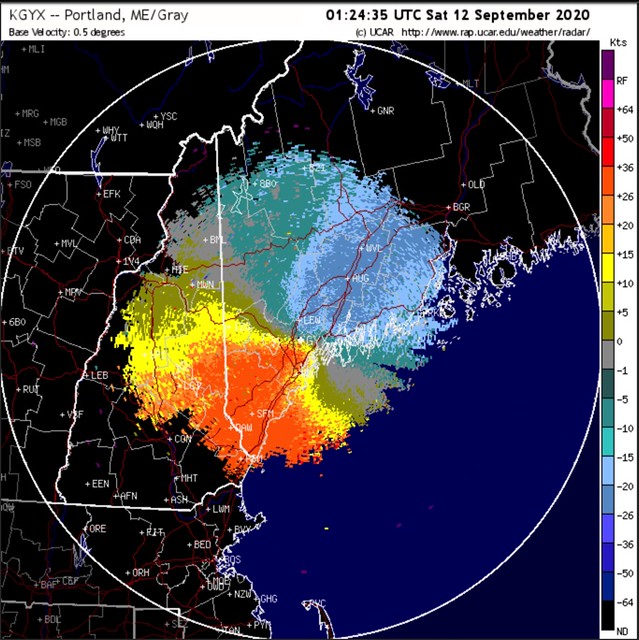Brief "Birding by Radar" tutorial



On 24 June, 2020, I spent a few hours at a local spot near my home, documenting breeding bird activity in the area for the Maine Bird atlas. Once I returned home I created a google map showing the general areas of each known territory that I discovered. Each selected area is highly approximated, and color coded with species.
The map can be viewed here: https://www.google.com/maps/d/edit?mid=12qQZi90uqUyfXc29e8l9bUM4Leh1DDmP&usp=sharing

Feeding on an Eastern Gray Squirrel on the ground under a cedar (northern white?) in the park when we arrived. When feeding back was arched somewhat cat-like, with its head down.
After carefully studying photos, I have concluded that it appears to be molting into 2nd cy, or basic II (probably meaning this individual is at least nine months old, likely a few months older), with scapulars and wing coverts uneven and with brown and black mottling, plumage on face and in tail also appear darker than when first reported in Biddeford in August 2018 and the secondaries were messy-looking with uneven lengths and black coloration. Short primary projection, not extending much beyond the secondaries,, about to the base of the visible portion of the rectrices.. Long, unfeathered, yellow tarsi were quite obvious, as well as the long tibia feathered with the same pattern as the underparts and slight barring on the rear. Rectrices were, be the looks of it, in the process of being molted, with the rectrices on the left (when viewing the bird from the rear) being mostly brown with thin, closely spaced dark barring and a wide dark band across the ends of some of the feathers. The rectrices on the left had an adult-like pattern, with wide, crisp black and white bands running across them, three white bands and two black bands visible. Very tip of feathers white. Primaries more of a chocolaty brown than the rest of the wing with darker barring. Heavy hooked bill slaty gray, with a dull grayish-yellow cere. Irides appeared reddish-brown in sunlight, surrounded by a dark teardrop shape of feathers. Underparts buffy orange with dark streaking along the vein of the breast feathers, undertail coverts cleaner with only light streaking/speckling. Face covered in dark brown/black streaking, concentrated mostly on crown, nape, and behind the auriculars. Appeared slightly larger than a RTHA.
Scared from the ground by someone running through the park, apparently oblivious to what was going on, and it flew to a tree right next to where I was standing and was perched there until we left. Cleaned bill by rubbing against the branch of the spruce that it was in.
This individual is presumed to be of the subspecies (race) ridgwayi, from Mexico and central america based on plumage details (Maine Bird Records Committee, Eighth Report).
This bird succumbed to frostbite during January of 2019, and was later euthanized at Avian Haven because there was no chance of recovery. I believe I heard somewhere that this bird was discovered to be a male during the process of taxidermying it, but I can’t be sure and don’t remember the source.
A huge crowd was assembled to watch the hawk, and reporters and news cameras were seemingly everywhere. I even made it on TV.

Only one of the multiple overwintering birds seen, but two others heard.
Hoping to be able to study these closer to find out if they are the same formative plumage birds that wintered here that have molted, or a new wave of adult migrants coming through.
One observed under feeders, resting in brush pile and scratching on ground. Appeared to be in, or perhaps has completed, prealternate molt from the formative plumage worn throughout its winter stay to first alternate plumage. Multiple WTSP were observed here recently with very scruffy-looking heads, and some of the body feathers of this bird appeared to be feathers retained from formative plumage, with worn/drab-looking wing coverts, weak buffy wingbars, and rectrices that did not appear super worn but not newly replaced either. This suggests that either only the head was molted, or that the head and a some of the body feathers were molted. The head stripes were crisp and bright, but became worn and brown towards the posterior of the white median crown stripe and the black lateral crown stripes. I wonder if the prealternate molt is not yet complete, or if these these remnants of the formative plumage will be retained throughout first alternate?
Most of these birds have been singing more lately, and though they look like mature adults in plumage, they obviously still have a lot to learn about their song!